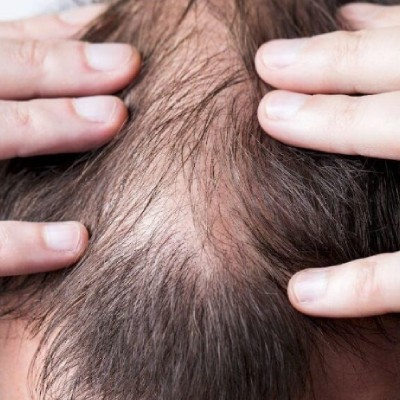How to Choose the Right Hair Restoration Technique: 2022 Guide

31 May 2022

Hair Experts @ AHS

In recent years, there has been much advancement in hair restoration techniques. It means patients now have better access to hair loss treatments that offer them long-lasting results.
Around the age of 35, many men start noticing some degree of hair thinning or hair loss. This number increases up to 85% after they turn 50. Not only men, even women today suffer from hair loss due to stress, anxiety and environmental pollution. Due to hair loss, both men and women feel a lack of confidence in their appearance. That’s why many men and women today opt for hair restoration treatment to get their hair back.
In recent years, there has been much advancement in hair restoration techniques. It means patients now have better access to hair loss treatments that offer them long-lasting results.
Keep reading to find out the hair restoration options available, their pros and cons and which one is best for you to get optimal results.
Why Choose Hair Restoration Technique?
The hair restoration technique shows effective results, which is why many people opt for this technique for hair restoration. However, the success rate of this technique usually depends on various factors, such as the thickness of the individual’s donor hair and the experience of a chosen surgeon.
As per the American Society of Plastic Surgeons (ASPS), the technique used for hair restoration often makes modest changes to the fullness of hair. But for dramatic changes, individuals may go for tissue expansion, flap surgery or scalp reduction techniques. But it’s essential to understand the process of each procedure before giving it a green signal.
While there are no major studies on the high success of hair transplants, many smaller studies give positive information on their effectiveness. According to one study, people who picked FUE using beard or body hair implementation on the scalp were not that happy with the results, with an average follow-up of around 2.9 years. In 79 participants who used scalp hair the overall satisfaction score was 8.3 out of 10.
Another study indicates using platelet-rich plasma (PRP) therapy was somewhat helpful in getting a higher success rate. All the participants of the PRP technique noticed 75% hair regrowth after six months. They even noticed rapid hair density improvements compared to the non-PRP participants.
Who Is Eligible For A Hair Restoration Treatment and How?
A professional hair transplant procedure gives a better visible improvement in appearance and confidence. The following are the good candidates for hair transplant:
- Men showing signs of male pattern baldness
- Women with hair thinning
- An individual who lost some hair after scalp injury or a burn
Hair replacement is NOT good for:
- People with fewer “donor” hair sites from where hair is removed for transplant
- Women with widespread hair loss throughout their scalp
- People with hair loss after taking some medication like chemotherapy
- People who develop thick fibrous keloid scars after surgery or injury
How to Choose the Right Hair Restoration Treatment

There are two main types of hair restoration techniques: FUT (Follicular Unit Transplantation) and FUE (Follicular Unit Extraction). Both techniques are effective for restoring your natural-looking and thicker hair.
FUT
In Follicular Unit Transplantation (also called the strip technique), a physician takes out a thin but long piece of tissue from the rear portion of the scalp. The individual follicular units are further extracted from this strip via stereo-microscopic dissection.
After the follicle extraction, the wound gets closed over time but leaves a linear scar.
Benefits of FUT hair restoration treatment:
1. Manageable Recovery Time
The FUT technique has a manageable recovery time that lasts between 10 to 12 days. But certain patients experience more discomfort with FUT than with other procedures. It is due to the potential inflammation caused at the site of strip removal.
2. Better Hair Follicle Survival Rate
FUT technique has a better hair follicle survival rate because the removed follicles are carefully harvested and implanted. It keeps the protective tissue firmly intact to ensure the grafts are higher quality and robust.
3. Virtually Undetectable Scarring
This procedure offers better and natural-looking results while leaving a very thin, linear scarring. The scarring is just 1mm in diameter. So, it is barely noticeable. As the surrounding hair grows, the scarring conceals easily. Hence, it’s virtually undetectable.
4. No Extra Scarring Due to Subsequent Sessions
No matter how many procedures an individual undergoes, there will be only one scar on the scalp. On the other hand, FUE leaves a small, round scar behind every implanted follicle unit.
FUE
A surgeon will harvest each separate follicular unit from the scalp with the FUE hair restoration technique. Since hair follicles are harvested randomly, the physician can remove hair from the donor area with less noticeable hair thinning. Hair harvesting or grafting is done on the scalp through microscopic circular incisions during this hair transplant technique.
There are two main types of FUE hair transplants: Manual and Robotic.
Manual FUE: This hair transplant technique is often done by a doctor using a handheld device for manually extracting separate hair follicles.
Robotic FUE: This hair restoration procedure uses a robotic device to extract hair from the scalp. The physician first selects the hair amount needed for harvesting and maps out the selected donor area. After that, the ARTAS robots work to harvest the donor grafts with precision. Thanks to this advanced technology, it’s easier to achieve unparalleled accuracy and precision.
Benefits of Robotic FUE
1. High Graft Quality
The computerised robotic device enables real-time 3D analysis. It also helps you calculate the extra characteristics of every hair follicle. It further enables the robot to choose the strongest and healthiest hair follicles that result in successful hair transplants and high-quality harvested hair.
2. Minimal Pain
Since FUE hair transplant uses a minimally invasive technique, most patients experience less pain at the time of the procedure. Like a trip to a dentist's clinic, the FUE technique also uses local anaesthesia. This ensures that there is just minute discomfort at the time of the procedure, but not heavy pain.
3. Natural-Looking Results
The robotic FUE technique first harvests and then transplants hair at precise natural groupings. Plus, it leaves NO linear scarring behind. It gives hair a natural appearance. It enables you to wear hair as short as you like without the visibility of a scar.
4. Short Recovery Time
This procedure only takes around eight hours to complete. And, with no stitches or scalpel in this treatment, the recovery process after the FUE transplant is quick. So, many people return to their everyday activities within a few days.
5. Minimal Scarring in Donor Area
Since this procedure harvests hair follicles randomly, the density and look of the donor area are NOT highly affected. Since the donor area remains unaltered or unaffected, FUE is a great treatment for people who like to keep hair very short at the back.
Conclusion
Both FUT and FUE hair restoration treatments are great for men and women facing hair loss. When selecting between FUE and FUT, you must discuss it with your surgeon.
At the time of consultation, you and your doctor will find out about the vision and expectations from the procedure. You will also know the number of follicular units vital for achieving the desired result. The hairline’s final look will also get revealed. This will help you and your physician select the best hair restoration technique.
Stay Updated
Subscribe to our email newsletter for helpful tips and valuable resourses
Be an influencer
Join forces with Advanced Hair Studio! Explore exciting collaboration opportunities tailored for influencers. Let's redefine haircare together.
Connect now












